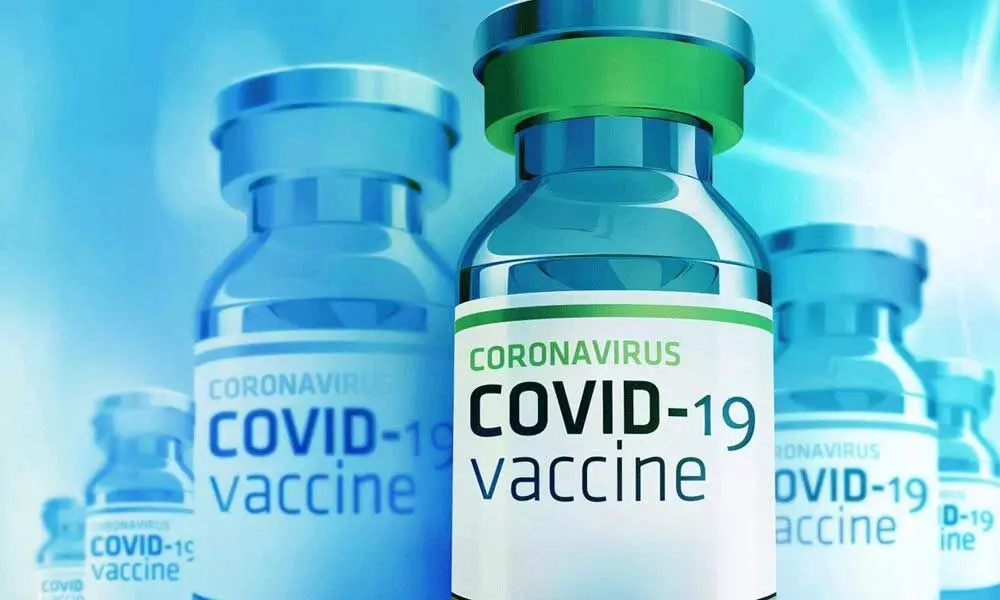What 95% effective vaccine could do is pretty exciting
A virus that is ‘99 per cent ineffective in killing anyone’ can be quite deadly
image for illustrative purpose

We don't shut down our economy because tens of thousands of people die on the highways. It's a risk we accept so we can move about. We don't shut down our economies because tens of thousands of people die from the common flu
In wealthy Western countries with lots of older people, the coronavirus that causes Covid-19 has killed roughly 1 per cent of those infected with it, meaning 99 per cent survive. Meanwhile, two new vaccines have so far been found to be about 95 per cent effective in preventing symptoms of the disease.
Lots of people seem to have trouble thinking through percentages like these. While I hesitate to elevate the since-deleted thoughts of a pseudonymous dude on Twitter as representative of anything in particular, the quote that follows is such a succinct expression of that trouble (plus it had gotten more than 12,000 retweets and 45,000 likes before being deleted) that it seemed worth sharing and then working through:
Forgive me if I'm not excited about a vaccine that is 95 per cent effective against a virus that is 99 per cent ineffective in killing anyone.
Where to start? Well, first, a virus that is "99 per cent ineffective in killing anyone" can be quite deadly.
Back in March, as the Covid-19 pandemic was just getting going and worldwide fatalities amounted to 3.4 per cent of confirmed cases, US Senator Ron Johnson of Wisconsin argued that even if the disease were to kill "between 1 and 3.4 percent of the population," we needed to keep in perspective that
We don't shut down our economy because tens of thousands of people die on the highways. It's a risk we accept so we can move about. We don't shut down our economies because tens of thousands of people die from the common flu.
In 2019, an estimated 36,096 people died in the US of traffic accidents, and during the 2018-2019 flu season, an estimated 34,157 died of "influenza-associated" causes. If the coronavirus really were to kill 1 per cent to 3.4 per cent of Americans, that would mean between 3.3 million and 11.2 million deaths. This is, in case you need it spelled out, a lot more than 36,096 or 34,157.
It also isn't going to happen. Even back in March, expert estimates put Covid-19's fatality rate at or below 1 per cent of those infected, and assumed that a significant percentage of the population would never be infected even under the worst-case scenario. Since spring, better treatments and better success at shielding the most vulnerable from the disease (thanks to increased availability of tests and protective equipment) appear to have brought fatality rates down further.
But despite those improvements and huge changes in behaviour aimed at slowing the spread of the disease – some mandated by government, some not – Covid-19 has killed at least 250,000 Americans so far, with deaths pretty much certain to top 300,000 before the end of the year and seemingly on track to hit 400,000 for the 12 months since it first started exacting a significant toll in the U.S. in late March. Again, that's a lot more than 36,096 or 34,157, and "99 per cent ineffective in killing" can be devastatingly effective when it comes to a highly infectious disease.
What would change with a vaccine that is 95 per cent effective at preventing the symptoms of Covid-19, even assuming it doesn't reduce disease severity for the 5 per cent whose cases it doesn't prevent (when it fact it probably does)? Well, that 1 per cent chance of dying from the disease would fall to 0.05 per cent, a 20-fold reduction. To take it out of percentages, deaths would drop from 1,000 for every 100,000 infections to 50. The 250,000 death toll so far would be reduced to 12,500. And while I've been ignoring the very different fatality risks by age group to keep things simple, it would mean the risk of death for those 35 to 44 would fall from 68 in 100,000 to three, and the risk for those 75 to 84 would fall from 8,500 in 100,000 to 425.
In fact it would probably fall much more than that, if enough Americans were vaccinated. The trial data released so far do not indicate if the vaccines prevent infections, just symptoms. But if they have any impact on the former, as seems likely, they would also slow or even halt the spread of Covid-19, meaning that the risk of getting infected would fall alongside the risk of getting severely ill if infected.
A rough estimate based on the infectiousness of Covid-19 is that about 70% of the population would have to be immune for its spread to slow without any social distancing or other preventative measures. The latest "nowcasting" estimate from the covidestim model assembled by epidemiologists and biostatisticians at Harvard and Yale is that close to 55 million Americans, nearly 17 per cent of the population, have been infected with Covid-19 so far. At the rate things are going that could be 30 per cent (or more) by the time vaccines start to become widely available.
If the vaccines turn out to be 95 per cent effective at preventing infections, and previous infections with the disease do too, then this would mean about 145 million previously uninfected Americans (44 per cent of the population) would have to be vaccinated in order to reach the 70 per cent threshold. Those are some big ifs. The actual herd-immunity threshold might be higher or lower than that, and there are other complications. But it's an indication of what 95 per cent effective vaccination might accomplish. Seems pretty exciting to me. (Bloomberg)
Justin Fox

